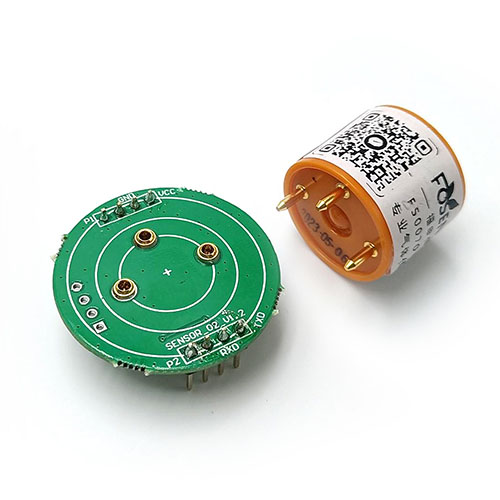Ammonia sensor working principle
What is ammonia?
When it comes to ammonia, most people are probably not familiar with it. But in fact, we are very easy to come into contact with ammonia in daily life, ammonia is a colorless and has a strong irritating odor gas, it is lighter than air, long-term exposure to ammonia, may cause harm to human health. In industry, ammonia, as an important chemical raw material, is widely used in the production of urea, soda ash, ammonium nitrogen fertilizer and nitric acid, such as chemical fertilizer, nitric acid, ammonium salt, soda ash, and in the organic synthesis industry to produce synthetic fibers, plastics, dyes, urea and so on.

The dangers of ammonia
If the concentration of ammonia is too high, it will cause certain harm to the human body. If the concentration of ammonia is too high for a long time, the skin tissues and respiratory system of the human body will be stimulated and damaged, and ammonia will adsorb on the human skin mucosa and eye conjunctiva, producing stimulation and causing inflammation. If the human body inhales too much ammonia, it can cause poisoning such as sore throat, chest tightness, breathing difficulties, and even death. In order to avoid accidents during manual operation, it is necessary to monitor the ammonia concentration in its environment.

Working principle of ammonia sensor
An ammonia sensor is a device used to detect the concentration of ammonia in the air. The Electrochemical NH3 Ammonia Gas Sensor produced by Fosensor is based on the principles of chemical reaction and electrochemistry. When ammonia enters the sensor, it reacts with chemicals inside the sensor to produce an electrical signal that detects the ammonia concentration.
The core component of ammonia sensor is sensor chip. The sensor chip usually consists of two electrodes and an electrolyte. An electrolyte is a liquid capable of conducting electricity, which can form a charge distribution between two electrodes. When ammonia enters the sensor, it reacts with the electrolyte, changing the charge distribution, which produces an electrical signal.
The sensitivity and response speed of the ammonia sensor depends on the material and structure of the sensor chip. Sensor chips usually use metal oxide semiconductor materials, such as titanium dioxide, zinc oxide and so on. These materials have high electrochemical activity and sensitivity, and can respond quickly to the presence of ammonia.

Ammonia sensor applications
Ammonia sensors have a wide range of applications. It can be used in industrial production, environmental monitoring, medical and health fields. In industrial production, ammonia sensors can be used to detect ammonia leaks and ensure the safety of workers. In environmental monitoring, ammonia sensors can be used to detect ammonia concentration in the air and prevent air pollution. In healthcare, ammonia sensors can be used to detect the concentration of ammonia in urine and help doctors diagnose diseases.
Ammonia sensor is a very important detection equipment. Its working principle is based on chemical reaction and electrochemical principles, with high sensitivity and response speed. With the continuous development of science and technology, the application range of ammonia sensors will be more and more extensive.





